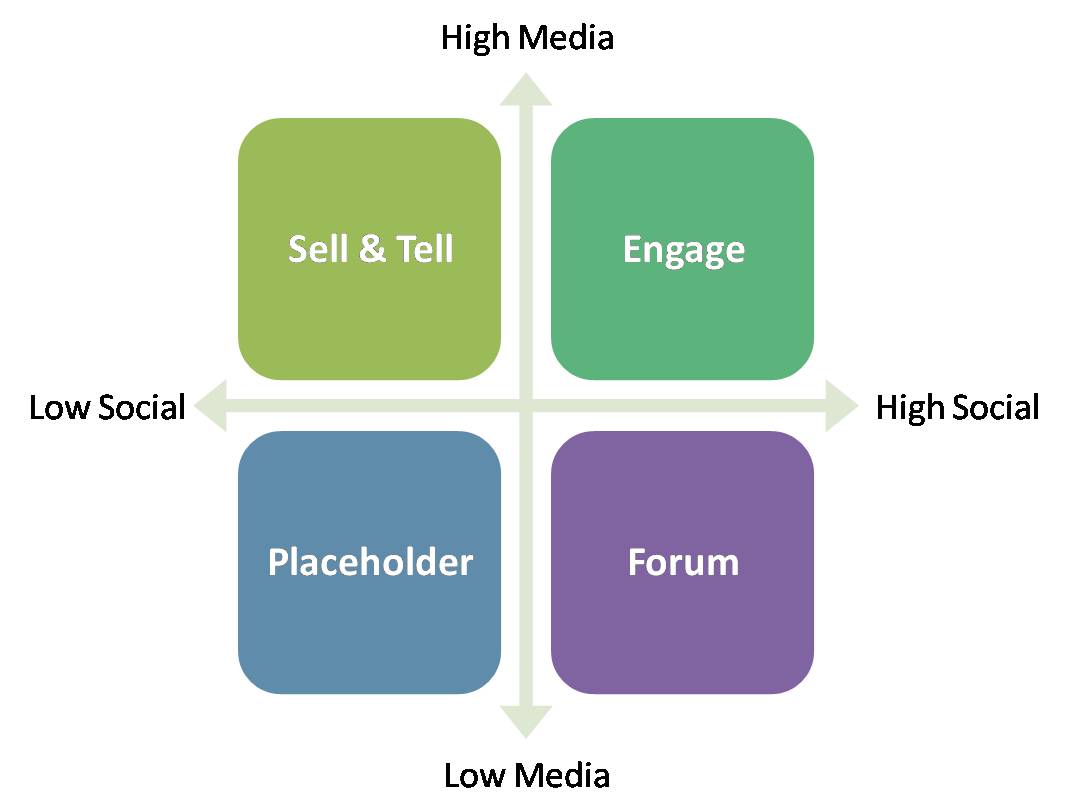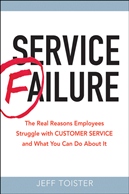Social media strategies (4 of 4): Engage
 Jeff Toister
Jeff Toister  Wednesday, March 31, 2010 at 7:48AM |
Wednesday, March 31, 2010 at 7:48AM | This post highlights the fourth of four social media strategies I uncovered in my experiment to learn how companies use this medium to engage their customers. I highlighted the first two strategies, the Placeholder and the Sell and Tell, last week. Yesterday, I highlighted the Forum. Today's strategy is called "Engage", as in "I'm using social media to engage my customers". The funny thing is very few companies in my experiment used this strategy.

Engage
This strategy is characterized by high levels of social interaction and high media. The catch is your media piece has to be interesting to your customers to entice them to socialize with your company.
When to use it
This strategy isn't right for every company because it can take a lot of time and effort, but there are a few situations where it can be tremendous.
- Your products or services require some education. The Cuvaison winery is a great example here. They post YouTube videos of their latest wine releases to their Facebook page. If you are a wine club member, you can watch the short video and then wait for your latest shipment to arrive a couple days later. Comment on how you liked it and someone from the winery will reply!
- Your brand truly inspires passion, and your customers want to interact with your company and with each other. Unfortunately, I didn't find any good examples here, even though I consider(ed?) myself a fan of these organizations.
How to use it
I guess I'm a bit lost here! The point of the experiment was to observe from a customer's perspective rather than simply repeat what so many social media gurus have explained much better than I can. However, I can offer two tips from my observations:
- Respond! You risk alientating customers if you don't respond to comments or participate in conversations, especially the conversations you initiate!
- Provide meaningful media. Give us something interesting to start the conversation. The Home Depot recently posted a video to their Facebook page that explained how to start a container garden and then asked, "What's the most unusual container you've used as part of a container garden?" They got some interesting responses and I found it helpful because it's something I'm looking into.
Tune in tomorrow for the exciting conclusion. One preview - 7 of the 12 companies in my experiment hurt their image in my eyes. Tomorrow I'll reveal all and tell you why I think a lot of companies have a long way to go.




Reader Comments (3)
Jeff, it looks to me like there's a real common thread here - which is perhaps going to be part of your wrap-up tomorrow, so I hope I'm not jumping the gun!
It seems like the companies that do it right are the ones who stay on top of what's happening from beginning to end - from setting their policy (and presumably understanding internally what they want to gain) to following up, following up, following up.
And of course, it's the latter - the followup - where things can go very sour very fast.
I wonder if you'd agree that it's better not to go any further than "placeholder" in your model if you don't think you can really execute on the follow-up side?
Thanks for the comment, Grace! I think you are right on that the companies that truly engage their customers do it best. You made a guess earlier in the experiment that perhaps the smaller companies would fare better in this area. I would have predicted the same, but it seems it really is the companies that dedicate the appropriate amount of resources (i.e. people) that do best.
Regarding strategy selection, I think your comment is true no matter what strategy you pick. If you can't really execute, your company is better off not doing it.
How interesting, and yet in hindsight of course: it's the willingness to dedicate resources.
I think I was assuming (and we all know about the dangers of that) that the smaller companies would be more likely to be invested in staying in touch and would therefore put the time into it. But obviously, t'ain't necessarily so.
I'm looking forward to the conclusion of the tale!